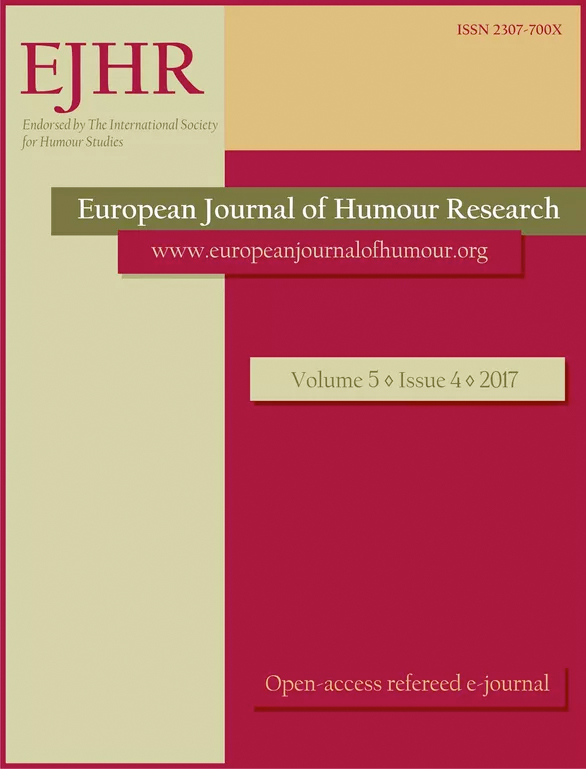Humorous TV ads and the 3WD:
Humorous TV ads and the 3WD:
Evidence for generalizability of humour appreciation across media?
Author(s): Jennifer Hofmann, Willibald RuchSubject(s): Social Sciences, Language and Literature Studies, Media studies, Theoretical Linguistics, Applied Linguistics, Communication studies, Pragmatics, Sociolinguistics, Theory of Communication, Marketing / Advertising
Published by: Krakowskie Towarzystwo Popularyzowania Wiedzy o Komunikacji Językowej Tertium
Keywords: advertisement; funniness; humour appreciation; incongruity; willingness to buy; jokes; nonsense; sensation seeking;
Summary/Abstract: Individuals differ in their appreciation of jokes and cartoons with respect to the structure of the humorous material (e.g., whether the jokes and cartoons are can be categorised in terms of incongruity-resolution or in terms of nonsense), as well as content (e.g., whether they contain sexual themes or not). While the 3WD (3 jokes dimensions) test allows for the measurement of such differences in a paper-pencil test of verbal jokes and visual cartoons, humour transported by other media, such as TV advertisements, has not been included so far. The current study aimed at assessing the appreciation of jokes and cartoons alongside the appreciation of humorous TV ads that were pre-categorized according to the structure and content factors of the 3WD. Moreover, relationships to personality and willingness to buy were also assessed. A sample of 134 adult participants completed the study. A joint factor analysis of the 3WD scores and humour appreciation in TV ads shows a five-factor structure, with three factors denominating the appreciation of incongruity-resolution humour, nonsense humour and sexual humour, a fourth factor denominating the liking of incongruity resolution humour with sexual themes (in both ads and jokes) and an advertisement specific factor. Thus, the 3WD dimensions can also be verified in humorous ads. Psychoticism and sensation seeking correlated negatively with the perceived funniness of incongruity resolution humour, replicating findings for the 3WD and additionally showing that the relationships are similar with respect to humour appreciation in TV advertisements. Moreover, the appreciation of humour predicted the willingness of the individual to buy the product or use the service. To conclude, the structure of humour appreciation is generalizable across media. Yet, there is also some advertisement specific variance and future studies may address the question of whether the 3WD covers all aspects of humour appreciation across media types. Moreover, knowing the target group of a product (and personality features of this group) may help to tailor the humour of the advertisement to match the “humour taste” of potential customers.
Journal: The European Journal of Humour Research
- Issue Year: 5/2017
- Issue No: 4
- Page Range: 194-215
- Page Count: 22
- Language: English

